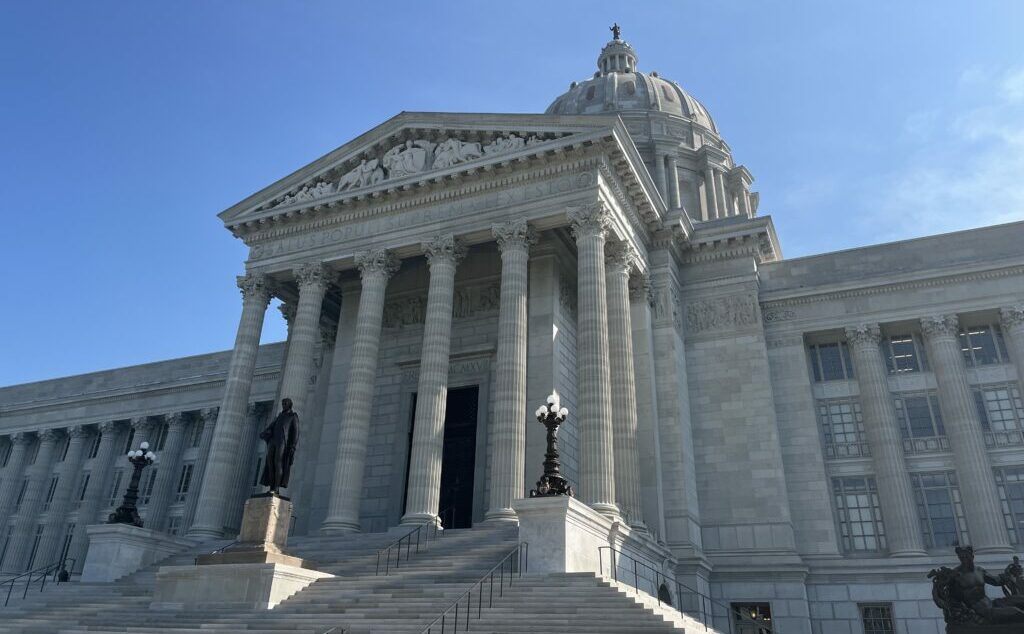Missouri state budget bulging with $6 billion in surplus cash

For the first time in its history, the only real limit on what Missouri can buy on a cash-and-carry basis is the imagination of the people spending the money.
The state treasury is bulging with more than $6 billion in surplus cash, the result of 28 months of double-digit revenue growth and federal payments tied to COVID-19 relief and recovery. If growth rates continue at current levels, general revenue in the current fiscal year could approach $15 billion.
Three years ago, the general revenue fund took in $8.9 billion.
Some foresee a slowdown starting next year, as inflation-fighting policies slow the economy and the state sees the actual impact of recent tax cuts. Lawmakers and Gov. Mike Parson’s administration are trying to account for those uncertainties as they negotiate the budget baseline for the coming legislative session, said Sen. Lincoln Hough, R-Springfield.
“It is almost kind of a wait and see game,” said Hough, who is expected to chair the Senate Appropriations Committee next year.
But the large surplus promises to smooth any downturn while also allowing for new spending initiatives.
The first priority should be state agencies at or near a crisis due to staff shortages and turnover, said state Rep. Peter Merideth, D-St. Louis.
Merideth is the ranking Democrat on the House Budget Committee.
The Independent has documented staff turnover in the Children’s Division at nearly 50%, with children in foster care missing visits with parents and rushed abuse investigations. There are hundreds of people waiting for beds in Department of Mental Health facilities due to a lack of staff.
To maintain minimum staffing, the mental health department uses expensive contract professionals. To cover the cost, the department is asking for a $22 million supplemental appropriation through June 30.
Those agencies need targeted spending to recruit staff, Merideth said. And state employees generally need a raise, he said.
“I think we need a very large investment and an increase in investment in what our state workers are paid, especially those state workers that take care of our most vulnerable,” Merideth said.
Last year, at the urging of Parson, lawmakers gave state employees the largest pay raise in decades, at least 5.5% for everyone on the state payroll, and approved a new base wage of $15 an hour for state jobs.
State agencies have submitted their budget requests for the coming fiscal year, and the next step in crafting the state budget is an estimate of revenues. Jim Moody, a lobbyist and former state budget director under Republican Gov. John Ashcroft, said he expects recession and tax cuts to start slowing state revenue in the second quarter of 2023.
“It is hard for me to imagine that in that quarter, it is going to keep pace with last year,” Moody said.

Revenue buoyancy
From 2016 to 2019, state revenues grew at a steady, if unspectacular, rate.
Income tax and sales tax receipts mirrored inflation and grew about 6.5%. As profits increased, corporate income tax receipts rose at double the inflation rate.
In the three years since, sales tax revenue has grown 50% faster than inflation, income tax receipts at double inflation and corporate income taxes at almost five times the inflation rate.
Whether the current rush of revenue is high tide or a new base level will play out over the next couple of years.
The top income tax rate will fall to 4.95% for 2023. Triggered steps in earlier cuts will reduce taxes on many businesses.
Moody estimates the cumulative effect of those cuts will be to reduce revenue by about $680 million in 2023.
By the time those cuts are taking hold, he said, the inflation-fighting interest rate hikes engineered by the Federal Reserve will be slowing economic growth.
The economic slowdown, if one is coming, will be felt in the first half of next year, Moody predicted.
“By April through June of next year,” he said, “you could have a confluence of things that turn things pretty quickly.”
So far, the only noticeable impact of interest rate hikes on state government has been to increase the surplus. General revenue interest earnings, $50 million so far this fiscal year, are more than double the earnings for all of fiscal 2022.
Tax receipts are rising faster than inflation through a combination of factors. Sales tax has been augmented by more revenue from internet retailers, while consumers are spending from savings and taking on large amounts of new debt.
Income tax receipts reflect rising wages and investment gains. The state minimum wage, $11.15 an hour, is up 42% since 2018, or $7,000 more a year for full-time work.
When the state set $15 an hour as a floor for its employees, large private employers near state facilities in central Missouri responded by boosting their starting pay.
The Dollar General warehouse in Fulton, where the state operates a prison, a mental health hospital and the Missouri School for the Deaf, is now offering $20.50 an hour, up from $17 at the start of the year.
The decline in revenue due to tax cuts is predictable. The impact of a recession is uncertain.
In the mildest recession of the past 30 years, state revenues continued to grow. In the worst, starting in 2008, revenues declined for three consecutive years and took five more years to recover to pre-recession levels.
When lawmakers met in special session to cut taxes, Hough negotiated higher thresholds for revenue growth to trigger future cuts.
“We will see very quickly what kind of impact that really has,” Hough said. “The unknown is, where does this economy go?”

Spending demands
This year’s $49 billion state budget, passed by lawmakers in May, is the state’s largest in history.
While state budgets generally grow from year to year, two items totaling more than $5 billion were new. The largest, at $2.9 billion, was a one-time appropriation of federal COVID-19 recovery funds.
Much of the money will be used in local projects. Recipients for one big piece, $410 million in grants to improve local water systems, were announced Thursday.
The second is the continuing expense for expanding Medicaid to cover lower-income adults from 18 to 64. The program budget was set at $2.5 billion this year, with no general revenue needed to cover the state’s 10% share.
In the coming year, the Department of Social Services anticipates the cost of Medicaid expansion will increase by $373 million, again without needing general revenue for the state share.
Public education gets the biggest portion of general revenue. Funding through the foundation formula, which is the main source of state support, has been stagnant for several years.
But public schools got a boost they didn’t expect when lawmakers included $214 million to cover the full state obligation for student transportation. It was the first time since 1991 that the state had paid its full share.
The one-time extra cash has helped but the state needs to address public education’s staffing challenge, said Melissa Randol, executive director of the Missouri School Boards Association.
“We have a crisis in Missouri with our salaries impacting our teaching workforce,” Randol said. “We need more than just one-year commitments without the ability to sustain that long-term.”
Missouri ranks 47th in average teacher pay and second-to-last in the nation in starting salaries at $33,234.
Lawmakers also funded a program proposed by Parson to help districts boost minimum teacher pay to $38,000 and resumed state funding for the Career Ladder program, which helps districts pay more for teachers with advanced education.
In its budget request for next year, the Department of Elementary and Secondary Education is seeking funds to implement some recommendations of the Teacher Recruitment and Retention Blue Ribbon Commission.
The commission recommended changing state law to set the minimum at $38,000 a year, estimating the cost at $29.5 million per year. Increasing the average teacher pay by $1,000, the commission estimated, would cost $81 million.
In its budget request for 2023, the department asked for the minimum pay funding but not the money to raise average salaries.
The biggest new item in the education budget is $77 million for increasing foundation formula payments to charter schools under a law passed this year. The department has also asked for $233 million to continue fully funding transportation, up $19 million, and $31.8 million to expand the Career Ladder program.
Hough and Merideth said they expect bipartisan support for continuing full transportation funding and for the requests stemming from the task force report.
But Merideth said he’s skeptical how far lawmakers will go to put money into education or other needs.
“I am not going to take for granted we have a huge surplus until we are doing the things our state needs to do,” Merideth said.
And Randol said she’s waiting to see the money in a spending bill.
“My grandfather said, ‘don’t tell me what your priorities are, show me your checkbook and I will know what your priorities are.’”
Miss Clipping Out Stories to Save for Later?
Click the Purchase Story button below to order a print of this story. We will print it for you on matte photo paper to keep forever.

